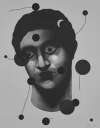Alice
Neel
Alice Neel, a Modern American portraitist, captured the complexities of the human psyche with raw, emotional honesty. If you’re seeking original Alice Neel prints and editions for sale or wish to sell, request a complimentary valuation and explore our network’s most in-demand pieces.
Alice Neel art for sale
Discover Alice Neel prints for sale, exclusively available through our private network of collectors. Explore signed and unsigned screenprints, lithographs, digital prints, and rare editioned proof prints by era-defining blue chip artists.
Sell Your Art
with Us
with Us
Join Our Network of Collectors. Buy, Sell and Track Demand
Biography
Alice Neel, a champion of figurative painting during a time when the art world was dominated by Abstract Expressionism, stands among the 20th century's most significant portraitists. Her work delves deeply into the human condition, capturing the essence of her subjects with unflinching honesty and a poignant, psychological insight.
Born on January 28, 1900, in Merion Square, Pennsylvania, Neel grew up in a middle-class family. She showed an early interest in art, which was nurtured by her high school education. Pursuing her passion, she enrolled at the Philadelphia School of Design for Women (now Moore College of Art & Design), where she honed her skills and adopted the principles of the Ashcan School, which favoured realism and depictions of everyday life.
The trajectory of Neel's artistic development was decidedly personal, with her work reflecting her experiences, including grief. Her early paintings, often sombre and moody, evolved into a more expressive style featuring vivid colours and fluid lines. In the 1930s, Neel moved to New York City, where she became an integral member of the bohemian community in Greenwich Village, and later, in Spanish Harlem. Her portraits from this period capture the diverse tapestry of urban life, including neighbours, artists, activists, and intellectuals.
Neel's career is a testament to her consistent commitment to figurative painting, even as Abstract Expressionism dominated the art world. Her work transcends physical likeness, delving into the psychological and emotional states of her subjects. Neel's portraits reveal the complexities of human experience with a confronting honesty.
In the 1930s, after moving to New York City, Neel immersed herself in the vibrant bohemian community of Greenwich Village and later in Spanish Harlem. Her portraits from this period are notable for their diversity, capturing a wide range of individuals, from artists and activists to neighbours and friends. This period marked a significant evolution in her style, as she began to employ more vivid colours and fluid lines, reflecting the dynamic environment around her.
Describing her approach to portraiture, Neel said “I come under the spell of a person—out of myself into that other”. It is this empathetic and uncompromising approach which defines the artist’s work. Neel’s lively use of colour and bold brushwork create emotionally poignant prints which immerse the viewer in the world of the subject.
Despite facing personal tragedies, including the loss of her first daughter to diphtheria and the separation from her second daughter, Neel channelled her experiences into her art. Her portrayal of people, whether they were close family members or significant cultural figures like Andy Warhol and Eileen Myles, was always marked by a profound trust and insight.
Neel's unwaveringly vulnerable approach to art gained critical recognition. In 1974, she was honoured with a retrospective at the Whitney Museum of American Art, a monumental moment in her career that affirmed her status as a major American artist. Her work continues to influence contemporary artists, celebrated for its emotional resonance, and the artist's ability to capture the nuances of the human condition.

























